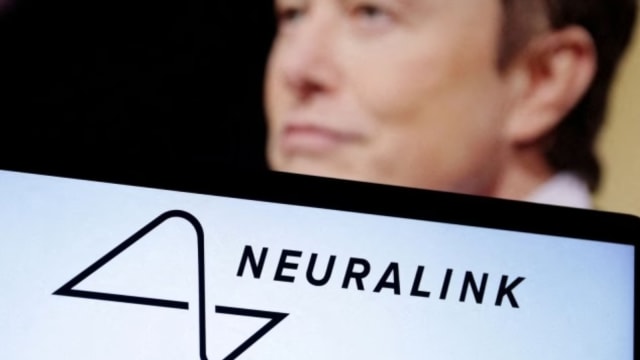
On January 30, the co-founder of Neuralink, Elon Musk, announced that his company had successfully installed a brain implant in its first human patient. Neuralink is essentially a neurotechnology company that aims to build direct communication channels between the brain and computers. Since 2016, many for-profit models like Neuralink have been launched with the objectives of “supercharging human capabilities”. For persons with disabilities, however, these technological advancements signify an innovation which has the potential to transform the manner in which they interact with their surroundings. For instance, Neuralink and other brain implants have been hailed to treat neurological disorders like ALS, Parkinson’s and conditions such as obesity, autism, depression and schizophrenia.
The fact that entrepreneurial efforts are being directed towards technological advancements with the needs of the disabled in mind essentially reassures them of a universally accessible ecosystem. With the advent of models like Neuralink, this reassurance operates on two equally important levels. The first of these levels is the enormous potential of technology per se to level the playing field for persons with disabilities. This can be seen today in the form of screen reading software such as JAWS or NVDA or braille displays for mobile phones. It is also seen in other assistive technology devices such as hearing aids or text-to-speech models. Stephen Hawking’s “cheek switch” for instance hugely underpinned his ability to communicate using only his cheek muscle.
However, despite these assistive technology devices which are already present, most persons with disabilities are unable to access them. The reason that cutting edge technology for the disabled has not appeared in the mainstream yet is not difficult to see. So far assistive technologies or any other innovations for persons with disabilities has been seen only from a charity/welfare perspective. As these models do not predominantly operate on a profit model, businesses and companies have little to no incentives to develop them further, or increase the market share for such technologies. A for-profit model such as Neuralink, thus makes a case for businesses to include persons with disabilities within the realm of their offerings. This “for-profit model” is the second level of reassurance that businesses will continue to find incentives in devising technologies that break down accessibility barriers for those with disabilities.
When businesses find profit motives in working at the intersection of technology and disability, they can open up a host of avenues for persons with disabilities in sectors which were previously unavailable to them. On the other hand, by launching such technologies and making them available to 16 per cent of the world’s population which is disabled, businesses can tap into an enormous market which creates multiple demands whenever an individual’s disability interacts with an ableist societal structure on a daily basis.
Close to home, institutions such as Barrier-Break work at this intersection of disability and technology while continuing to derive profits from their business. It works as an accessibility testing agency which focuses on making digital offerings such as websites, PDFs, images etc. accessible. The potential for such businesses to thrive is even more so in today’s legal landscape when courts and state institutions are becoming increasingly cognisant of the rights of those with disabilities, and the need to produce offerings which are proactively accessible in nature. This is evident through the recent directions of the Delhi High Court to make media content on OTT platforms accessible. Pursuant to this, the Central Board of Film Certification has even issued a call for expression of interest from service providers who are interested in providing accessibility services for upcoming media content. Moreover, the government’s draft guidelines mandating accessibility in media content for persons with disabilities and the new Broadcasting Services (Regulation) Bill, 2023 recently introduced in Parliament provide comprehensive mandates for broadcasting network operators and broadcasters to make their offerings accessible. Similarly, Phase III of the E-Courts project dedicates an amount of Rs 27.54 crore for “Disabled friendly ICT enabled facilities”.
All of the above initiatives are emblematic of a sensitised state and judiciary which acknowledges the transformative potential of technology in enlivening the rights of the disabled. Concurrently, the places where such initiatives have been taken, that is, courtrooms, theatres, OTT Platforms, Ed-Tech/Fin-Tech platforms serve as the perfect sites for businesses to implement their “for-profit” technology models. In our experience of working with both national and international entities in the past year, we have seen a gradual increase in the motivation of such entities to avail accessibility services. However, at the same time, we have also noticed a lack of maturity and diversity in the accessibility service market. This, in turn, often leads to the monopolisation of services. It inflates the price of services both for entities wanting to make their offerings accessible. In order to tackle this issue, a robust balance point has to be created amongst the interests of the three relevant stakeholders — the providers of accessibility services, their consumers, that is, businesses, educational institutions and the like and persons with disabilities. This will require arriving at suitable price points for different accessibility services, ensuring quality control and capacity building and foregrounding the needs and interests of persons with disabilities — the most critical stakeholders.
The for-profit model can not only make such technologies affordable by increasing market competition, it can also lead to the creation of a mature and vibrant accessibility market. This would revolutionise the manner in which persons with disabilities interact with ableist environments today. It would also have a direct bearing on the scope and extent of reasonable accommodations since it would radically alter the threshold of what accommodations are usually regarded as burdensome by a providing entity today. With the mainstreaming of more such models in society, the past will indeed become a foreign country.
Goyal is a law clerk-cum-research associate at the Supreme Court and the Sensitisation and Capacity Building Lead of Mission Accessibility. Bajaj is the co-founder of Mission Accessibility, Senior Associate Fellow (Disability rights) at Vidhi Centre for Legal Policy and a practising lawyer